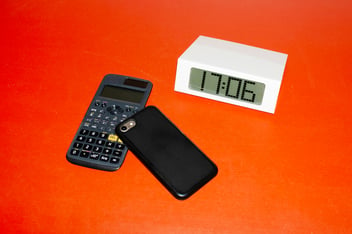Let's get to know you first.
Where did you live?
Johanna: I grew up in Helsinki, Finland, attended university in Sweden, and lived three years in England where I met my partner.
Is there anything surprising people may not know about you?
Johanna: I did semi-professional comedy improv for five years in Sweden, and shop anything thrifted.
Why did you get into improv?
Johanna: Since I worked and studied in Swedish, I sometimes felt like I couldn't fully express myself as easily as in English. So, being part of this English-speaking improv troupe gave me that outlet.
How did you first get involved in UX design?
Johanna: Almost by accident! I applied to university and spontaneously applied for "Interaction Design", which is close to UX. When I was accepted, I had to Google what that was. 😂 So, definitely not planned out.
What has surprised you most about being a UX designer?
Johanna: The versatility. I've been doing this over ten years and am always learning. It's a great discipline; you can approach UX from many angles: visual, business, and team processes.
Plus, it's a great enabler. I have been able to travel for work and live abroad, like I do now, living in California.
What do you wish people knew about UX?
Johanna: A lot of clients think of design in general terms, that it makes things pretty but in fact, the visual aspect is just the tip of the iceberg. It is much more in depth; the visuals are the cherry🍒 on top.
Have you been using any AI tools in your work?
Johanna: Great question. I have used image generators like Midjourney AI Art and Dreamstudio for layout inspiration, to see how it would look like first. I've made some AI-generated icons in vector format.
I have also used ChatGPT to summarize raw data from 'payment experiences' user testing so I could analyze it easily. All anonymously, of course! I have also used it to produce short copy for a landing page and to explain a site.
How were those AI tools?
Johanna: It's fun to use and check out. A lot can be boosted with AI but you still have to do the heavy lifting. Right now, the main pitfall I see is that you may lose uniqueness or originality in work...[by relying too much on AI only].
What are your most used tools for analyzing data?
Johanna: It depends on the stage. If there is no existing data, we generate it through surveys, interviews, with Google Forms. Otherwise, we use
data analytics tools like:
- Hotjar
- Google Analytics (GA4)
- Firebase for mobile apps
- Google Optimize for A/B testing and continuous improvements
This was super interesting. Thanks! Now, let's use your expertise to dive into the nitty gritty of creating an MVP.
Essential Elements for a Well-Executed MVP
Johanna's top tips:
- Stick to the minimum.
- A lot of clients are tempted to broaden the scope but keep to the minimum as you don't know how this will be adopted yet.
- Build it well from the start.
- It is challenging, of course, as you want to build out your vision. But, don't make it too complex.
- Narrow your focus.
- Above all, concentrate on what is most profitable first. You may have many products but focus on one product category that will be the most impactful and popular with your users.
- Get insights from data.
- If your business is already established, but your analytic tools are sparse, interview teams internally. Also, look at seasonal patterns. See where the volume is and what are simple product categories.
- Focus on the "delight aspect" for your consumer.
- You really can't underestimate this.
- Match perceptions.
- How you achieve your MVP should be on consumer-friendly interaction patterns based on familiarity, simplicity and visuals.
- Minimize rework.
- Include user validation in the MVP phase. Build a clickable prototype as fast as you can. You can do this before anything gets coded so you know what features to tweak and ensure the experience focuses on the right thing.
- Build practical functionality.
- To create consistency across screens, devices, content elements and visuals, put together a component library and design system. This will make workflows more efficient in the long run.
- Make it approachable.
- You may have a mundane monitoring tool for electricity consumption, for example. It doesn't have to be too techinical for consumers who don't know kilowatts and such. You can lower the threshold and make it insightful.
Could you share any examples?
Prioritizing Delight
My team was asked to make a nationwide postal provider's outdated platform for purchasing stamps and related physical products more modern and usable. It was complex. We had to integrate a fresh platform into their existing architecture.
Based on our data analysis, we chose one product category to pilot - seasonal Christmas cards, in particular, Santa's Letter. We focused on the delightful feel of Christmas. The Christmas spirit comes through the UI. It is visual and simple and the copy was whimsical, not fact based.
Personalized Focus
Vincit's most recent client wanted an MVP to launch an exciting new product that disrupts a flat retail product with creative personalization features. Designing was a challenge - with an unusual screen size and figuring out how best the user could interact with it.
We were able to develop a solid MVP because we initially created a user-tested clickable prototype. This allowed us to validate and refine how the brand was perceived and what the brand would be at its core. With users 'approving' the brand attributes that the founders wanted, we were able to progress to the MVP phase.
The launch date is coming up and we can't wait to see how it goes.
Thanks Johanna for being so helpful and sharing your best practices tips.
Are you looking for intuitive, human-centric design and execution on your next digital project? Set up a call with our team to learn how we can help you make your user experience the best it can be.



